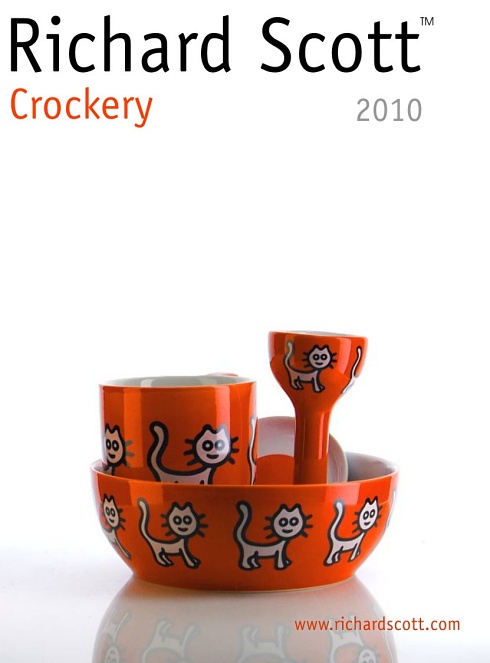
Download Brochure
Download Pricing
Let's talk about art.
Specifically, let's talk about the thin line between art and commerce, art and showbiz, art and marketing. But before we do, let's get something straight.
It's not a thin line, after all. Most of the time, it's not even a straight line.
It's a big fat line, black and bold, sure of hand and free in spirit, drawn to mark the divide between tracts of pure, blinding white and fields of flat, uniform colour: orange, yellow, green, red, pink, purple, blue.
That line is the signature, the trademark, the flourish, of a South African artist named Richard Scott, who boasts that he has had no formal training in art, and yet who has trained art to obey his own impulses, his own vision, his own capacity to dazzle, amuse, and provoke.
In Richard Scott's world, which is populated with Nudes and Cats and Trees and Yachts and Flowers and Cars and Lighthouses and Scooters and Swings and Flying-Saucers and Planes and Hot-Air Balloons, all art is made up of colour and line, and the third dimension, the one that brings the other two to life, is the Attitude of the Artist.
A dabbler in not-so-fine art at school, a qualified technical illustrator, an Internet entrepreneur, Richard became a full-time artist on the day he sold his first small work of white-and-colour-and-line to a gallery near his home in the seaside village of Hout Bay.
It is a sign of his approach to art - meaning also, the art of business and the art of marketing his art - that he does not sign his works, but rather stamps them with a reverse wooden-block of his first-name in lower-case.
And so Richard Scott has made his stamp on the world, with a prolific output of canvasses, some intimate in scale, some wall-size, that define a school of their own that he labels as Na´ve Pop. Well, maybe not so na´ve.
At the risk of sounding arrogant - no, at the reward of sounding arrogant - he tells the world that he does not paint to eat, that he paints because he wants to and because it brings him joy.
In that emotion, he is not alone, because now, at last, the world can eat off the paintings of Richard Scott, can drink off them, can hold them and use them and not just look at them on a wall.
Here is the hype, there is the product, here is the art. And here, more than anything else, is the time.
Welcome to the Richard Scott Crockery Collection for 2010, from Sagaform Belgium. Enjoy!
Gus Silber
Download Brochure
Download Pricing
|

